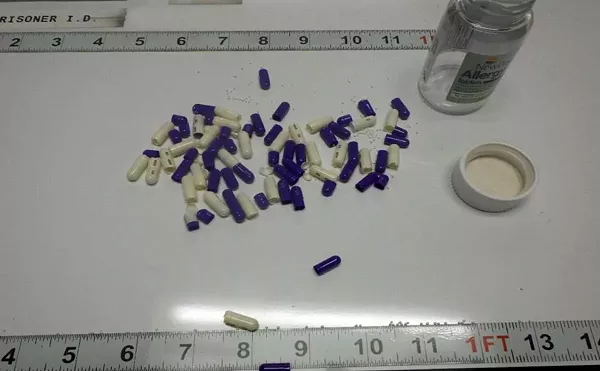When the Sierra Club noticed that a "white-tailed deer" license plate bill recently passed by the state House would raise money only to clean up roadkill, club leaders held a contest to find a more appropriate design.
Winners included a depiction of a bulldozer pushing a dead deer from the road, and a photograph of possum that had been accidentally squashed and painted over by a road-striping machine.
The Sierra Club mascot for the competition? Roger, the roadkill deer.
"Yes, it’s a sarcastic comment," says Sierra Club spokesperson Anne Woiwode, who opposes "the idea of using the picture of a white-tailed deer to clean up the mangled bodies of deer that are being killed all over the state."
According to the office of state Rep. Larry DeVuyst, R-Alma, who is sponsoring the white-tailed deer license plate bill, there were 65,397 vehicle-deer crashes in Michigan last year.
Environmentalists oppose the legislation, in part, because the white-tailed deer license plate would compete with other proposed nature-theme plates geared to help fund environmental projects including water quality improvement and protection for endangered species.
DeVuyst spokesperson Lynell Shooks says the representative doesn’t mean for the license plate to take money from other projects.
"He thought designing a license plate in Michigan for people who are interested in the environment, and in wildlife, would be a good way to provide funds for this program," she says.
Woiwode says the state should appropriate other money for roadkill cleanup, a responsibility that currently falls to county road commissions. Ron DeCook, deputy director of the County Road Commission of Michigan, says county road commissions in this state spend between $6 million and $8 million per year to push roadkill off county roads and some state highways. If DeVuyst’s bill becomes law, proceeds from the sale of white-tailed deer license plates would be made available at the local level to assist with those costs. To accompany last week’s contest announcement, the Sierra Club’s Mackinac chapter and the Michigan Environmental Council also released a list entitled "Greatest ‘Hits’ on Michigan’s Legislative Highway: Environmental Roadkill in the 1999 Legislative Session."
The environmental groups pointed out that legislators found time to appropriate $10 million to buy furniture for new offices they plan to inhabit later this year, but failed to fund Lake St. Clair cleanup with money from the voter-approved Clean Michigan bond.
"What they’re saying is that they’ll come back in the fall and deal with clean water issues," says Michigan Environmental Council Policy Director Dave Dempsey says. "But even then, there’s no guarantee that a dime will go to Lake St. Clair."
Meanwhile, Dempsey says, Engler’s administration has recommended that $45 million of the bond money be used to monitor, rather than clean up, polluted lakes and rivers statewide over the next 15 years.
Other hits included the House’s June 1 vote opposing implementation of tougher federal air quality standards, cutting a $50,000 DEQ program that the Sierra Club says encourages citizen participation in field and stream cleanups, and the House’s defeat of a bill that would have established an environmental justice task force.
Woiwode says Engler’s administration is partly to blame for not directing the Legislature to respond to citizens’ environmental concerns. Susan Shafer, a spokesperson for Engler’s office, disagrees with the Sierra Club’s contention that the administration isn’t providing enough leadership on environmental issues.
"CMI (Clean Michigan Initiative) is an example of something the governor fought for," Shafer says. "We also have the Department of Environmental Quality. DEQ focuses all of its energy toward making sure areas of the state are clean and are there for people to use and enjoy."
Shafer says lawmakers will appropriate more money from CMI, for cleaning up various sites around the state including lakes, when they return in the fall.
As for the white-tailed deer license plate, Shafer says that’s a legislative issue.
It’s doubtful the state would even consider replacing the white-tailed deer with their design, contest enthusiasts admit
"The reason we wanted to have a picture of roadkill on the plate is at least that’s honest," Woiwode says.






